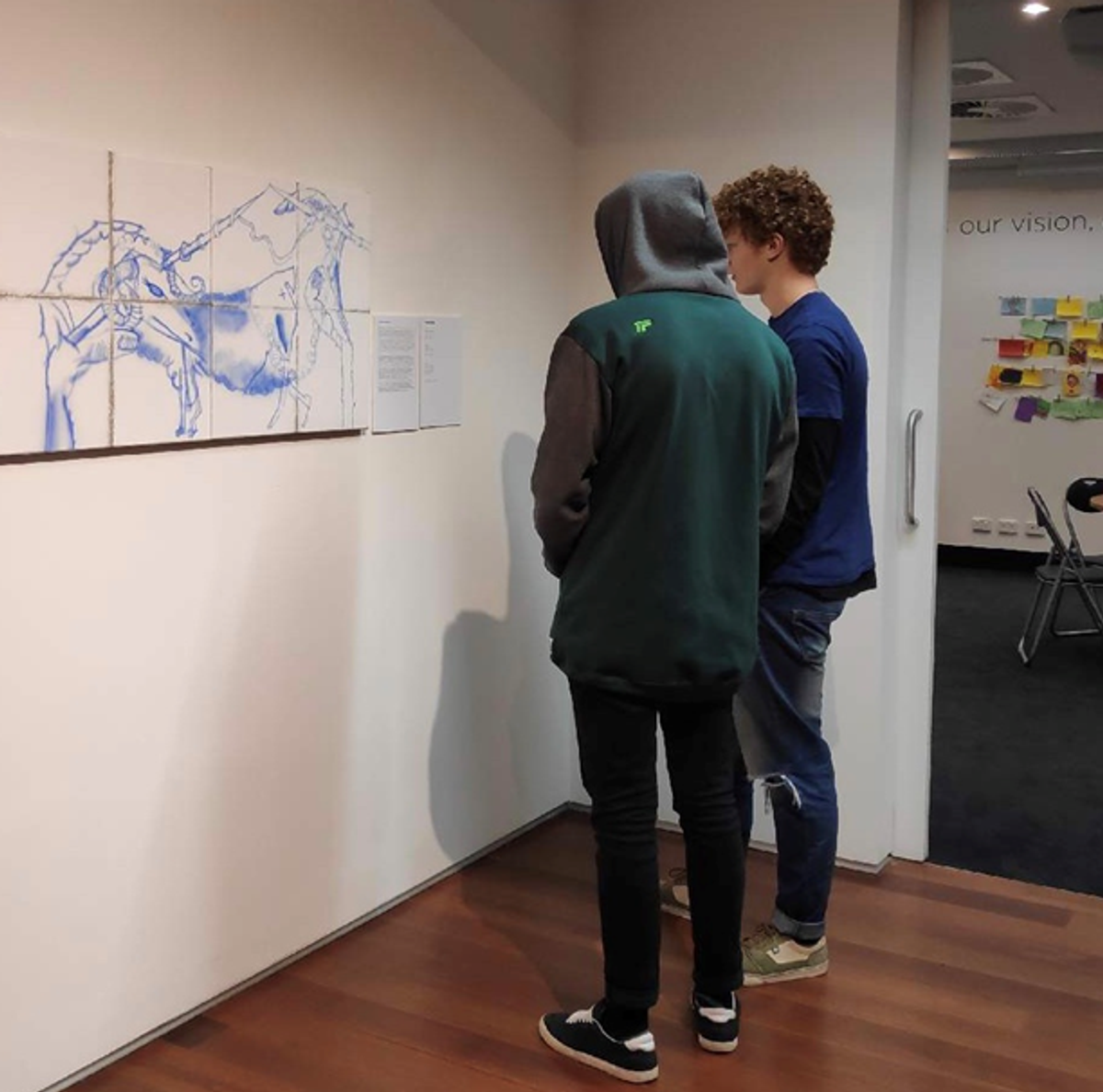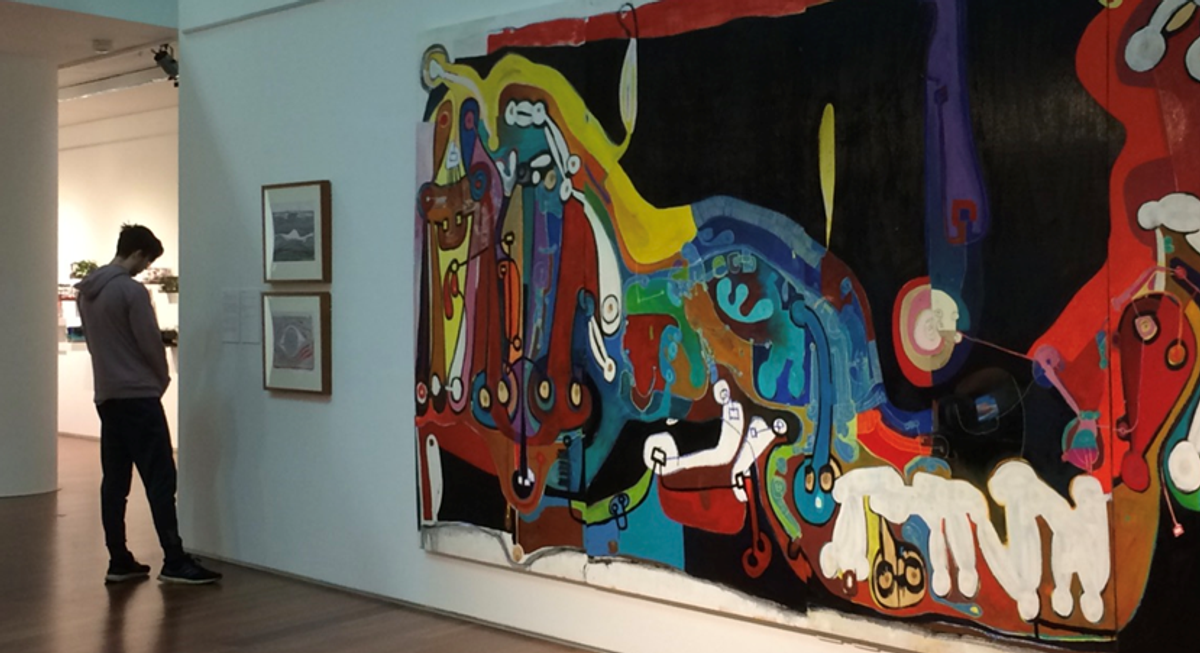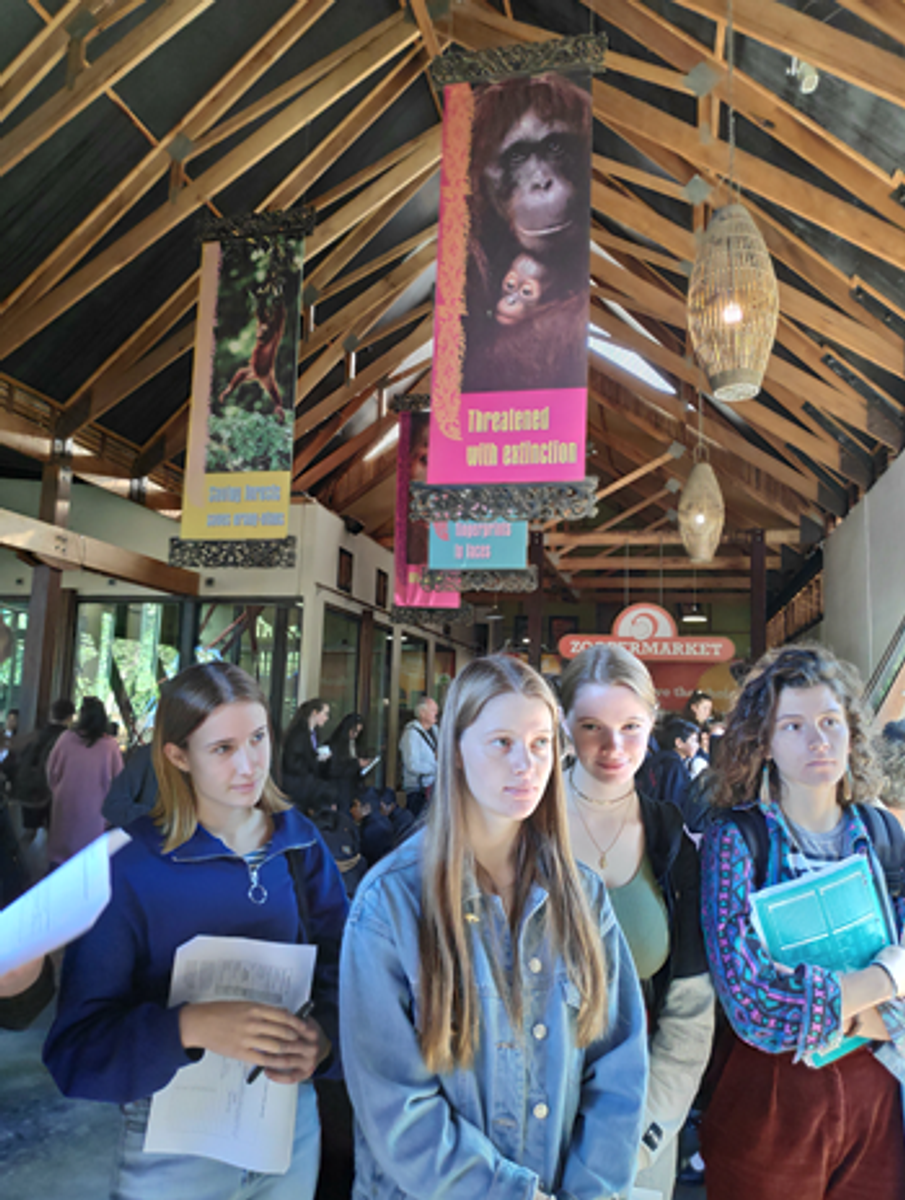Psychology
"STIGMA: dismantled, revealed" exhibition at the DAX Centre

Psychology
"STIGMA: dismantled, revealed" exhibition at the DAX Centre
by Linda Kay, Psychology teacher
One of the units of study for our students is Abnormal Psychology; we look at different approaches to understanding mental health issues, discuss diagnoses, explanations and treatments.


Students recently viewed the current exhibition “STIGMA: dismantled, revealed” and learned about the interface between Art, the mind and creativity. One student remarked that “The most interesting part about the DAX Centre was seeing how people portray their mental illnesses and also their experiences through the form of Art. As an Art student, it was quite amazing to see what forms, shapes and stories people can make to represent their hard times. It was also really cool to see that people use Art as a form of therapy to help them deal with their mental illnesses.”
During our visit we met Arthur, who regularly speaks to visitors to the DAX. Students found his story confronting but acknowledged that “He was an extremely open person which allowed us to gain a great understanding of everything that can lead to a diagnosis of mental illness. We witnessed a man who had been through a terrible situation in his life and had come out the other side strong and brave.”


A visiting Masters student from the Florey Institute explained current research into biological causes of movement disturbance in patients with dementia. Students were “intrigued by the experiments and the physical changes that occurred in the mice” due to Tau-P301L mutation.
by Kat Girbau, Psychology teacher
On 23 May, students visited Melbourne Zoo to observe the orangutans and use our new understanding of research methods to study their behaviour. (We arrived a little early for our session with Zoo staff so swung by the fascinating meerkat enclosure on our way to the classroom.)


Students had previously developed an hypothesis that aimed to predict the difference between orangutan behaviour in the wild and in captivity. We met with our (very excitable) educator Glen for the morning and learnt about the research methods and ethics committees used in the Zoo’s conservation programs, particularly that of the Helmeted Honeyeater. After a short role play as an ethics committee, students headed off to conduct their research. Learning about time budgets and enclosure enrichment from Glen, students then chose an orangutan to observe and gathered data on their habits, which they will later compare to behaviour in the wild.